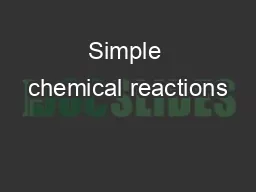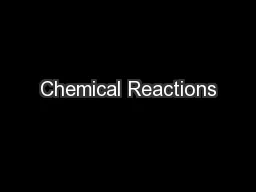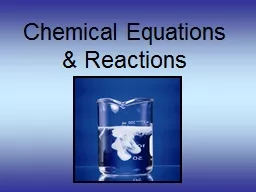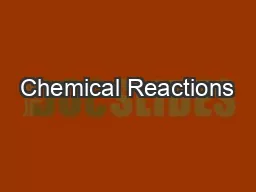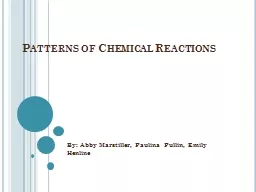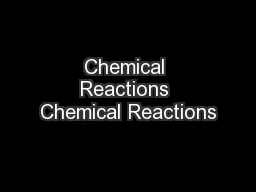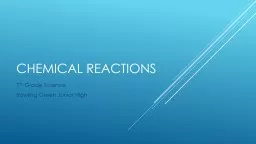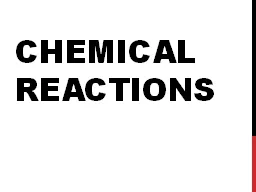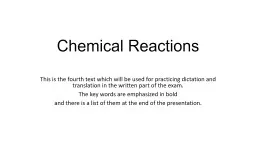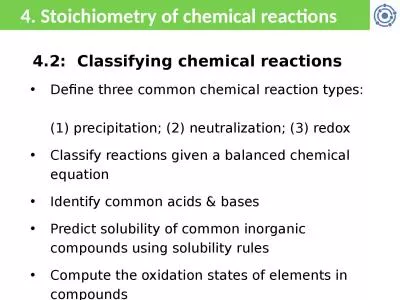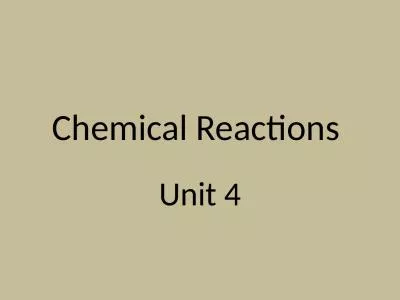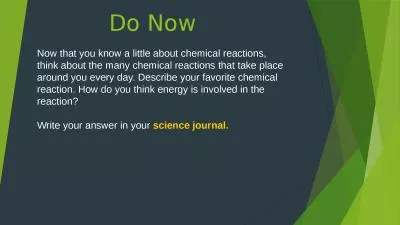PPT-Unit 3: Chemical Reactions
Author : stefany-barnette | Published Date : 2018-10-24
Add the new notes to your table of contents and then turn to the next clean page and set up your title and date Tape the two slides into your INB flat down directly
Presentation Embed Code
Download Presentation
Download Presentation The PPT/PDF document "Unit 3: Chemical Reactions" is the property of its rightful owner. Permission is granted to download and print the materials on this website for personal, non-commercial use only, and to display it on your personal computer provided you do not modify the materials and that you retain all copyright notices contained in the materials. By downloading content from our website, you accept the terms of this agreement.
Unit 3: Chemical Reactions: Transcript
Download Rules Of Document
"Unit 3: Chemical Reactions"The content belongs to its owner. You may download and print it for personal use, without modification, and keep all copyright notices. By downloading, you agree to these terms.
Related Documents


